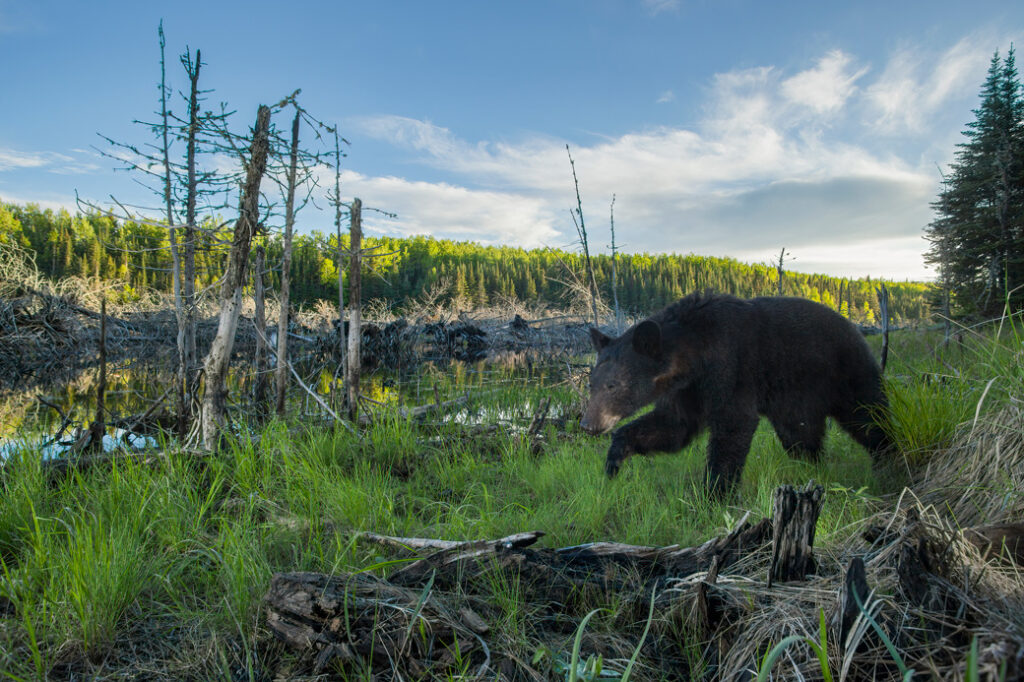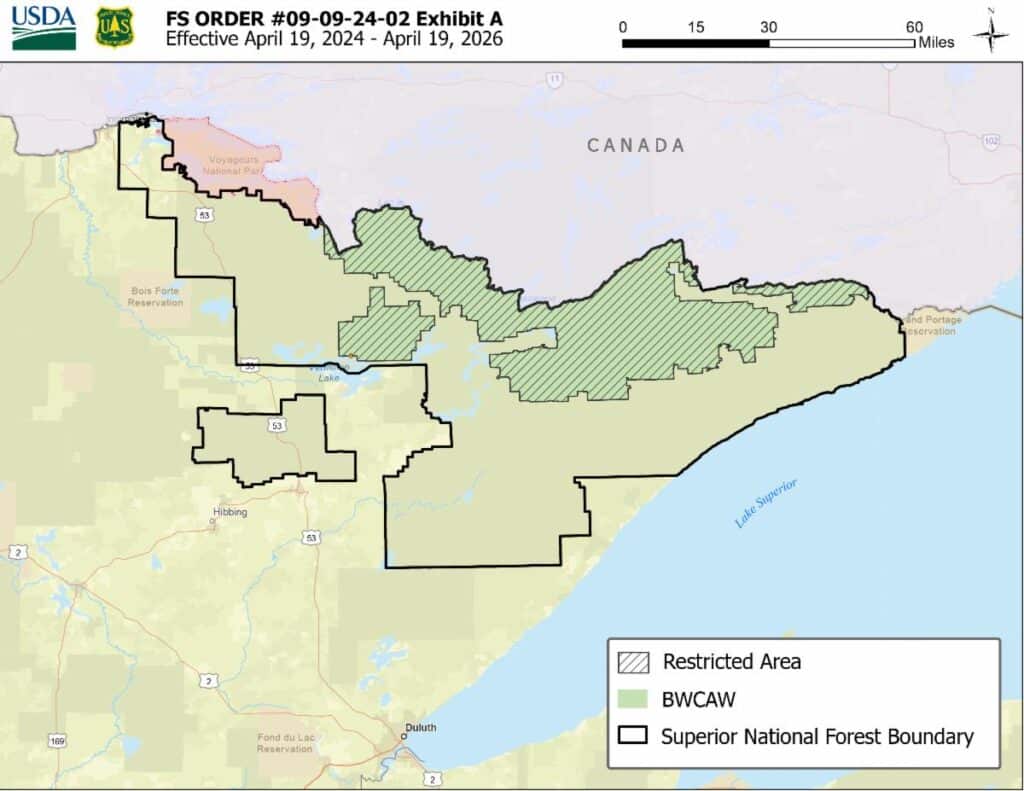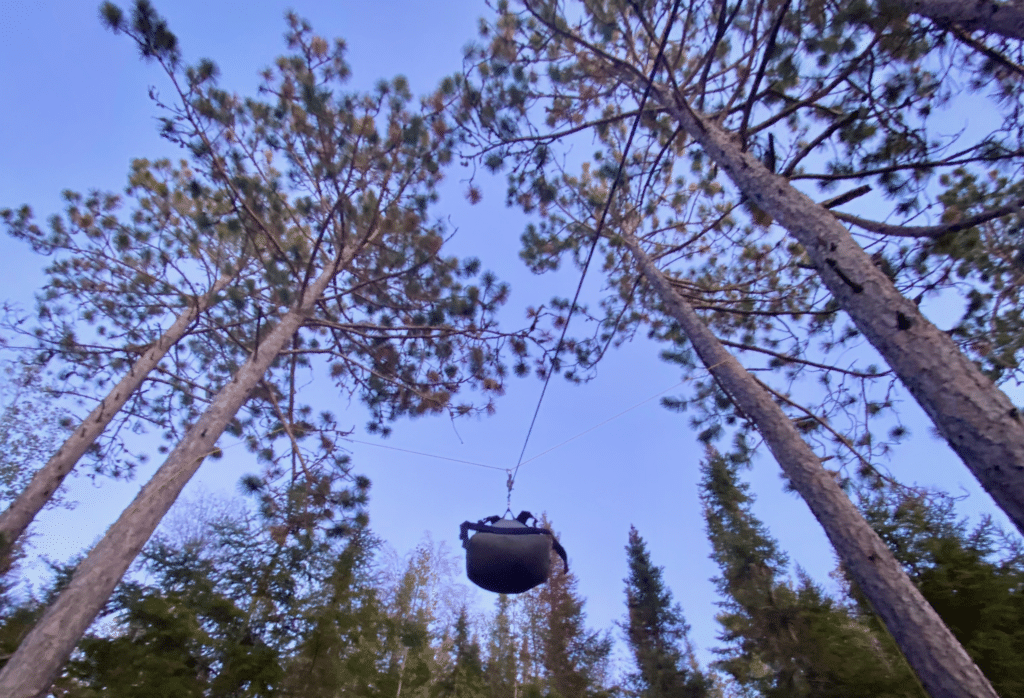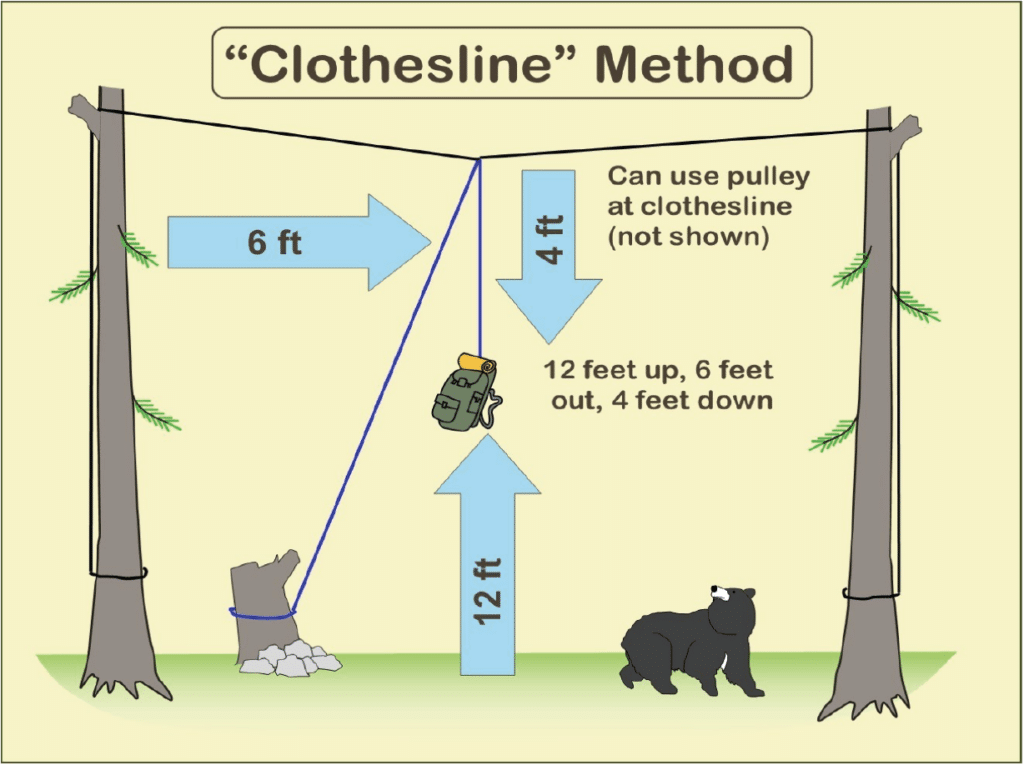
The USFS has updated the regulations concerning food storage in the Boundary Waters Canoe Area (BWCA). Hanging items in a tree or using approved bear-resistant containers has been a part of the regulations and rules, and now violations can bring penalties. The agency established this latest order to help prevent interactions between people and bears.
The order recently issued by the agency states: “In effect March 1-November 30 each year, except while being prepared, consumed, or under on-site visual observance, all food, food containers, scented items (such as soap, lip balm, toothpaste) and refuse shall be suspended at least 12 feet above the surface of the ground and not less than 6 feet horizontally from the trunk of a tree, or stored in an Interagency Grizzly Bear Committee (IGBC) certified bear-resistant container. 36 C.F.R. § 261.58 (cc).”
Penalties for violating the order may include fines or even imprisonment. As a result, the agency plans to issue warnings during the first year of the order except for gross violations.

Healthy bear population
Minnesota is home to a population of 13,000-18,000 black bears. They’re found mainly in the northern third of the state. Omnivorous (they eat both plants and animals), they’ll often roam long distances looking for food-rich areas.
“Last year was a banner year for natural bear forage across the State of Minnesota – berries and acorns in particular were abundant. Thus, biologists and the public are seeing increased cubs this spring with their mothers (sows) in search of food after hibernating during the winter months,” the USFS said in a statement.
Officials warned the public last year about an increase in the number of human-bear encounters. While they can occur anywhere, most reports came from the eastern side of the wilderness.

What does the order mean?
The USDA Forest Service provides specific guidelines for storing food and staying safe in bear country. Food must either be kept beyond the reach of bears or stored in a container certified as bear-resistant.
- Food, and garbage (including smelly items), must be put in a bag, pack, or container and hung at least 12 feet above the ground and 6 feet out from trees on either side. The other option is to store everything in a container certified as bear-resistant.
- The USFS provides a list of certified bear-resistant containers approved by the Interagency Grizzly Bear Committee (IGBC).
Hanging options
The Forest Service illustrates two methods for hanging a food bag. One involves utilizing a single tree with a pulley, while the other uses the clothesline method. If you plan on visiting an area where trees may be sparse due to wildfires, consider using a different option for storing food. When trees won’t work, bear vaults or canisters approved by the IGBC are available. The simplest way to prepare for proper food storage is to practice before leaving home.

Bear safety
When traveling through areas inhabited by bears, the USFS encourages visitors to take precautions. When bears get used to finding human food easily, they lose their natural fear.
- Wash dishes at least 200 feet from all water sources (roughly 70 big steps).
- Pack out cooking grease.
- Pack out all garbage including food scraps.
- Dispose of fish remains by traveling at least 200 feet away from campsites, trails, portages and shorelines.
- Avoid leaving food unguarded at the canoe/boat landing or the end of a portage.
- A cooler may not protect your food unless it is on the IGBC Certified Bear Resistant Products List. Most coolers are not bear-resistant, however some can be modified for bear resistance.
- “Blue barrels” are not bear-resistant and are not on the list approved by the USFS. If you use one, it must be hung. These are different from the bear canisters or vaults that are accepted.
- Scare off a bear by making a lot of noise. Shout, bang pots, or throw fist-sized rocks at the bear. A very persistent bear may be discouraged by spraying bear spray into its eyes.
Reporting encounters
The USFS asks visitors to report any bear encounters to their local offices so that they can track human-bear encounters. Please report bears that have attempted to get your food, returned to your area, or were undeterred by making noise.
More info:
- Forest Order 09-09-24-02: Boundary Waters Canoe Area Wilderness – USFS
- Superior National Forest Boundary Waters Canoe Area Wilderness bear safety order updated – USFS
- Boundary Waters Canoe Area Wilderness Regulations and Rules – USFS
- Tips for Recreating in Bear Country – USFS
- Bear Resistant Products – IGBC
- Black bear – MNDNR

Wilderness guide and outdoorswoman Pam Wright has been exploring wild places since her youth. Remaining curious, she has navigated remote lakes in Canada by canoe, backpacked some of the highest mountains in the Sierra Nevada, and completed a thru-hike of the Superior Hiking Trail. Her professional roles include working as a wilderness guide in northern Minnesota and providing online education for outdoor enthusiasts.

